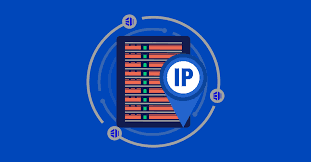A Step-By-Step Guide to Onboarding Large Outsourced Teams

LIKE.TG 成立于2020年,总部位于马来西亚,是首家汇集全球互联网产品,提供一站式软件产品解决方案的综合性品牌。唯一官方网站:www.like.tg
The business practice of outsourcing has been around for quite some time. Generally speaking, outsourcing involves subcontracting a job to a third party. But nowadays, the concept of looking for an outsourced partner may extend to a variety of applications.
Outsourcing enables organizations to delegate a particular function — such as the recruitment process, customer service, or digital marketing — to another firm to maximize the former’s productivity and minimize time consumption. Many businesses outsource various aspects of their operations to freelancers, contractors, or specialist groups.
Technological innovations have enabled many organizations, businesses, institutions, and media outlets to outsource talent from different countries and backgrounds. Outsourcing is an excellent strategy that employs millions of people around the world while also enabling businesses to save funds and continue making profits.
Essentials of Onboarding an Outsourced Team
Part of any outsourcing journey is the challenge of onboarding an offshore team. Yet this step is vital to making outsourcing projects successful.
Whether your organization is embarking on outsourcing for the first time or has successfully done it in the past, it's always a best practice to revisit the onboarding processes to gain a comprehensive understanding of what to expect and how to prepare for it.
The following is an overview of what the onboarding process requires.
-
Preparation of training materials or programs
In-house and outsourced employees alike, especially new ones, should have access to all relevant tools or resources to help them perform their job roles. You must have robust procedures or systems in place for employees to deliver quality outputs.
These mechanisms will ultimately enable your offshore staff to succeed despite their remote location. When conducting training programs, be sure to cover all the fundamental topics about their responsibilities in the team.
-
Warm welcome and company introduction
Regardless if you’re hiring 2 or 20 outsourced staff, you want them to positively represent your company. You can achieve this by properly welcoming them on the get-go and genuinely making them feel that they’re a part of your company. By encouraging your outsourced staff to build rapport with their managers and colleagues, your business may profit from improved teamwork and quality output.
-
Strategic orientation and oversight
Clarify how the work of your outsourced team will be managed remotely. Have regular meetings for all projects in progress as part of project management. Every week, keep track of deadlines and deliverables, as well as feedback and guidance. Remember that outsourcing isn't a one-size-fits-all solution, so you must orient and supervise your staff in a manner that suits and bolsters your business.
-
Realistic and measurable targets
Discuss your key performance indicators (KPIs) with the outsourced team. Your set of KPIs serves as an objective method of assessing the performance of your outsourcing partner.
Equally important is planning how to attain these targets. An outsourced team may not perform as well right away, but proper guidance could help familiarize them with your processes and, therefore, make it easier for them to achieve your business goals.
- Regular feedback
Assign someone from your in-house team to regularly provide feedback and review for your outsourced employees. Keep this practice until you’re convinced that the latter fully understand your standards and procedures. It’s also an effective way to determine whether the outsourced team is the correct fit for your business or if you need to find someone else early on.
To learn even more about managing remote teams and keeping employees working at home highly engaged, download our ebook now.
Download nowBest Practices for Onboarding Large Outsourced Teams
Even if your company already has an onboarding program in place, there are a few more arrangements to consider, especially if you're working with a larger remote team of a different culture. Here are widely practiced strategies to efficiently onboard larger outsourced teams:
-
Get your existing team on board, too
Ensure that your current workforce is on board and understands the processes before you start training and onboarding your new outsourced employees. They most probably have a lot of questions regarding the changes that are taking place.
For instance, they may be concerned about what bringing in more outsourced workers would imply for their job security. Organizing training sessions with both your in-house and remote teams is an excellent approach to set things straight and get everyone on board.
-
Build good working relationships
The majority of workplace onboarding meetings typically begin with an “Introduce yourself” engagement. They're usually quick, but that's fine because new employees will have more opportunities to form relationships in the days and weeks ahead.
However, such is not the case for remote workers. You'll need to be a little more proactive in encouraging conversations and getting to know your outsourced team to make new employees feel welcome and create the kind of relationship that leads to a positive, productive type of workplace culture.
-
Identify the ideal means of communication
Communication is non-negotiable for any business organization, so make sure your outsourced team has access to the communication channels you use. These channels should easily facilitate work interactions among team members.
Video conferencing is one of the primary modes of business communication, while other channels like email and direct messaging platforms can be utilized for employee check-ins and project follow-ups.
-
Set clear expectations for your outsourced team and educate them on their roles
Determine and communicate the contributions you expect from your outsourced team. Here, being transparent is necessary. Overlooking this important factor can result in underperformance, which can eventually lead to lower productivity.
Your organization should set clear work descriptions for every employee. Ideally, you should encourage your outsourced staff to ask questions at every stage of the onboarding process.
-
Get in touch with your outsourcing provider for sound advice
You may be building up an offshore team for the first time, but your outsourcing provider has done this so many times before and knows what works and what doesn't. A reputable provider that’s well-informed about outsourcing trends will be more than willing to share their knowledge and experience to help your business grow.
A credible outsourcing company can help you set up your team and hire customer success managers who are industry leaders. They can help you with KPIs, metrics, training initiatives, team structuring, and more.
Preparing Your In-house Team to Work with an Outsourced Team
Likewise, there may be a transition process for introducing outsourced personnel to your in-house employees, whether it’s the first time working with outsourced teams or they're already used to collaborating with offshore workers. During the initial briefings, you must set clear standards and goals for both in-house and outsourced employees.
Some of the crucial topics to cover should include task delegation, project ownership, and chain of command. You should also explain your main reasons for outsourcing and provide details on how outsourcing suits your long-term strategies.
Consider the following steps in preparing your in-house team to work with outsourced employees.
-
Disclose the reasons
Your decision to outsource has to be tied to short and long-term growth objectives for the company. Before incorporating an outsourced team, you must inform your current team about what those motivations are and how outsourcing can benefit the organization as a whole.
Strategic use of resources, productivity boost, and cost reduction are some of the advantages usually associated with outsourcing. For example, you could tap the services of outsourcing professionals instead of hiring salaried employees. You could then use the savings to replace outdated equipment with the latest iterations that will make work easier and faster for in-house employees.
Outsourcing can thus free up your in-house staff and let them focus on their core responsibilities while delegating non-core tasks to the outsourced team.
-
Draw the line on task ownership and responsibilities
When it comes to onboarding outsourced personnel, most companies fall short in the work assignment and project ownership aspects. Your new outsourced team is hired to take on very particular tasks and responsibilities. However, it’s possible someone else from your in-house team may already be handling such tasks—potentially leading to confusion and mismanagement. For example, if you decide to hire a software outsourcing company for a project, make sure everyone is aligned on their role and responsibilities within the scope of the project.
To avoid any gray areas and ensure that the outsourced workforce will immediately bring value to your business, you should define what the project ownership shifts will look like to your existing team. Once you’ve made this clear, then your outsourced talents can step up with the tasks or projects assigned to them.
-
Maintain open communication lines
Once you’ve decided to outsource, establish an open line of communication policy between your internal and external staff. Let your in-house team stay up to date with your plans for future outsourcing arrangements, if any. It also helps to encourage every employee in your organization to express any issues or concerns.
To learn more about giving access to vital HR and work information — even when they're not in the office. Download our ebook now.
Download nowOutsourcing Takes Some Getting Used To
In a way, incorporating an outsourced team into your organization is comparable to implementing new systems or expansion solutions when you first opened a business. As such, expect your employees to feel more at ease with their outsourced counterparts the more they interact with them.
Everyone, including the outsourced team for onboarding, requires adequate time and patience to adjust to new systems and processes, but remind them it's all in the interest of business growth.
About Author: Trevor Michael is a Customer Contact Industry Specialist of Select VoiceCom, an inbound call center with telemarketing and IT support services. He has operated successfully within this niche industry for over ten years across Australia, New Zealand, and Southeast Asia. He enjoys writing, golf, and going to social events.

LIKE.TG 专注全球社交流量推广,致力于为全球出海企业提供有关的私域营销获客、国际电商、全球客服、金融支持等最新资讯和实用工具。免费领取【WhatsApp、LINE、Telegram、Twitter、ZALO】等云控系统试用;点击【联系客服】 ,或关注【LIKE.TG出海指南频道】、【LIKE.TG生态链-全球资源互联社区】了解更多最新资讯
本文由LIKE.TG编辑部转载自互联网并编辑,如有侵权影响,请联系官方客服,将为您妥善处理。
This article is republished from public internet and edited by the LIKE.TG editorial department. If there is any infringement, please contact our official customer service for proper handling.


















